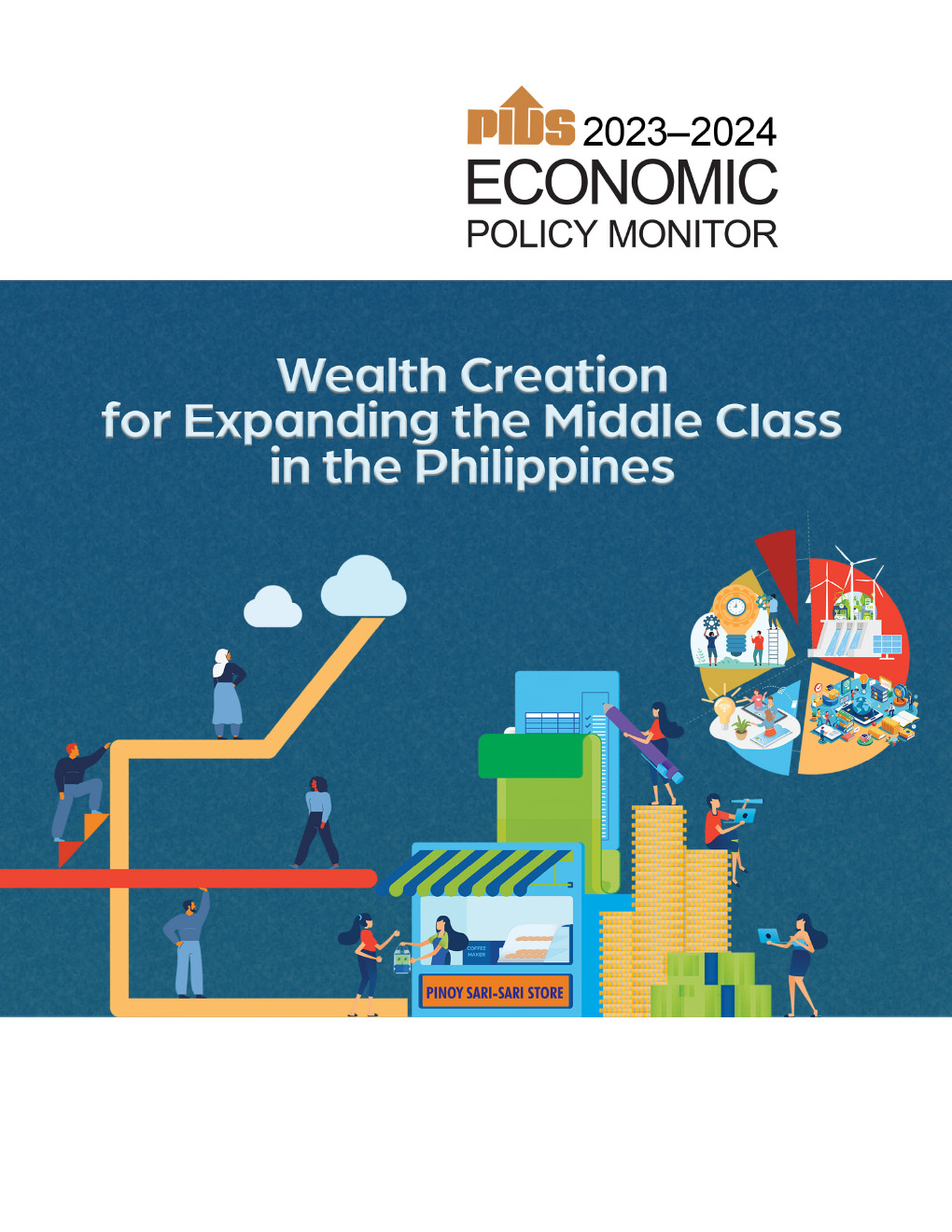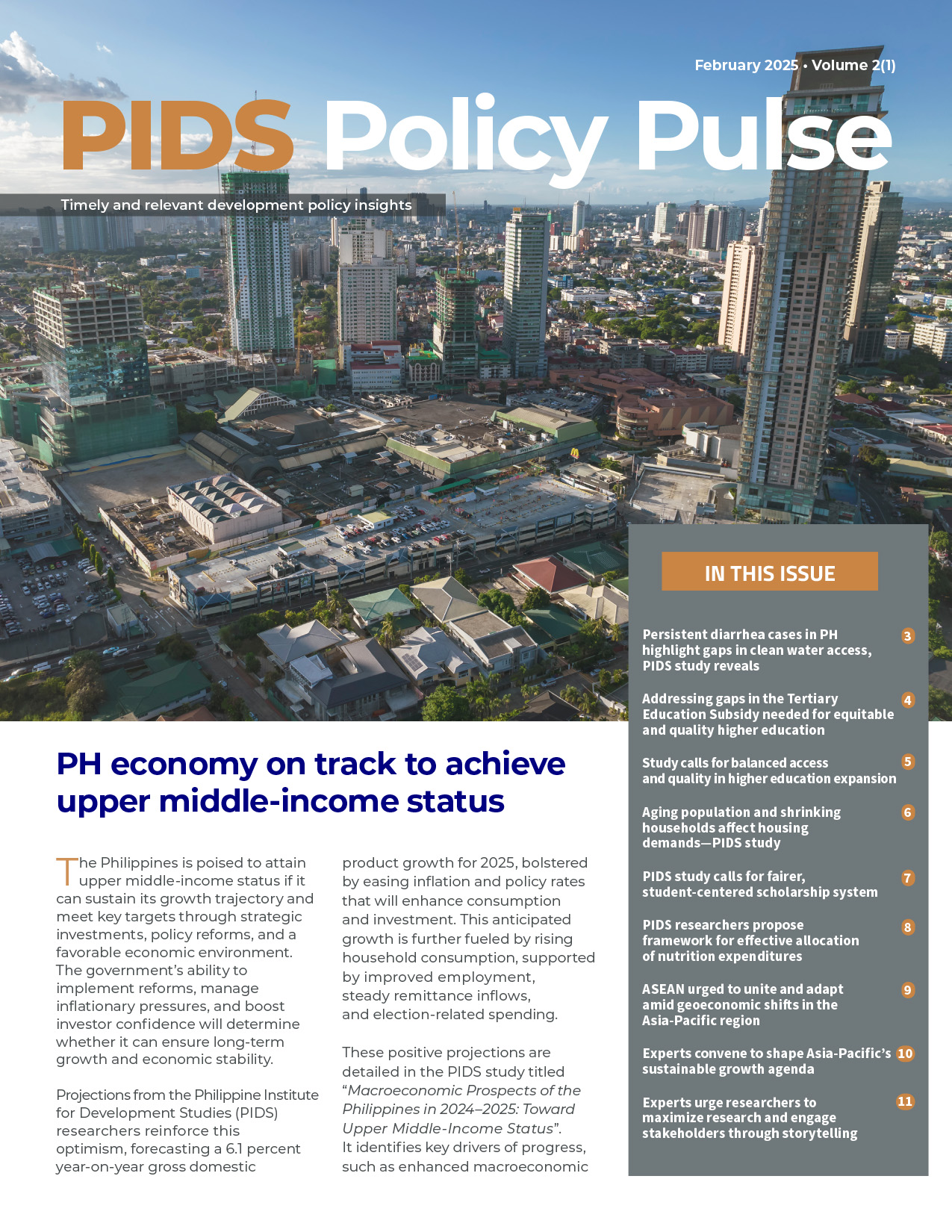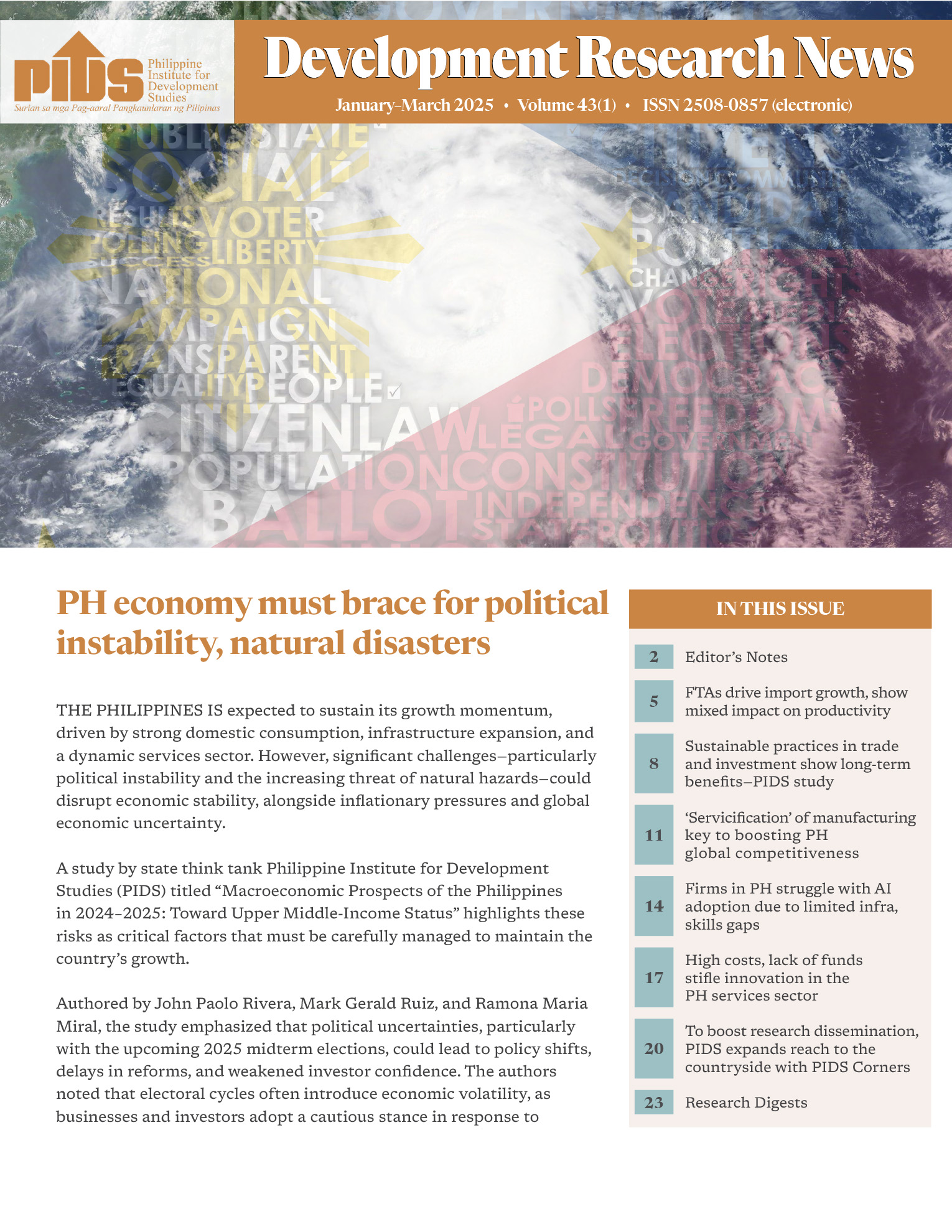Government think tank Philippine Institute for Development Studies (PIDS) strengthens its contribution to policy deliberations by releasing its first PIDS Economic Policy Monitor (EPM) starting 2011. The EPM approach is twofold: to consistently identify policy issues that need to be addressed and their corresponding policy recommendations in certain instances; and to discuss and analyze the impact or potential impact of recent policy measures.
This first issue of the PIDS Economic Policy Monitor focuses on three related issues: fiscal space, investment, and poverty alleviation.
With a 7.3 percent growth achieved in the country`s gross domestic product (GDP) in 2010, a feat that was beyond expectations of all analysts, the challenge for the government is to sustain this momentum and make economic growth more inclusive so that poverty may be reduced.
`One way to make economic growth more inclusive is to address so-called supply side constraints such as poor physical infrastructure`, according to Dr. Josef T. Yap, president of PIDS and one of the principal authors of the 2010 EPM. And supply bottlenecks can be reduced if `government has adequate fiscal space`, Yap added.
The EPM thus looks at how the government can improve its fiscal position to close the national deficit, estimated to be 3.9 percent of GDP in 2010, and have the needed resources to finance the Millennium Development Goals (MDGs) and achieve inclusive growth for the economy.
Based on the fiscal sustainability analysis presented in the EPM, national government revenues need to increase from 14.3 percent of GDP in 2009-2010 to 17.6-18.0 percent in 2012-2016 if fiscal consolidation were to be achieved while providing adequate budgetary support for the much-needed basic social services and infrastructure to achieve inclusive growth and the MDGs.
Eventually, efforts to achieve sustained economic growth must redound to addressing the poverty situation in the country. The 2010 EPM examines this issue more closely as it provides an assessment of the Philippines` poverty situation from a new perspective, looking at the factors that explain the rise in poverty incidence between the period 2003 and 2009; determining new sets of problems, if any, that cause or worsen poverty; and identifying the urgent matters that government needs to focus its attention on.
With the EPM becoming one of its regular publication series beginning in 2011, the PIDS hopes to further fulfill its mandate to help connect knowledge and policy.
This first issue of the PIDS Economic Policy Monitor focuses on three related issues: fiscal space, investment, and poverty alleviation.
With a 7.3 percent growth achieved in the country`s gross domestic product (GDP) in 2010, a feat that was beyond expectations of all analysts, the challenge for the government is to sustain this momentum and make economic growth more inclusive so that poverty may be reduced.
`One way to make economic growth more inclusive is to address so-called supply side constraints such as poor physical infrastructure`, according to Dr. Josef T. Yap, president of PIDS and one of the principal authors of the 2010 EPM. And supply bottlenecks can be reduced if `government has adequate fiscal space`, Yap added.
The EPM thus looks at how the government can improve its fiscal position to close the national deficit, estimated to be 3.9 percent of GDP in 2010, and have the needed resources to finance the Millennium Development Goals (MDGs) and achieve inclusive growth for the economy.
Based on the fiscal sustainability analysis presented in the EPM, national government revenues need to increase from 14.3 percent of GDP in 2009-2010 to 17.6-18.0 percent in 2012-2016 if fiscal consolidation were to be achieved while providing adequate budgetary support for the much-needed basic social services and infrastructure to achieve inclusive growth and the MDGs.
Eventually, efforts to achieve sustained economic growth must redound to addressing the poverty situation in the country. The 2010 EPM examines this issue more closely as it provides an assessment of the Philippines` poverty situation from a new perspective, looking at the factors that explain the rise in poverty incidence between the period 2003 and 2009; determining new sets of problems, if any, that cause or worsen poverty; and identifying the urgent matters that government needs to focus its attention on.
With the EPM becoming one of its regular publication series beginning in 2011, the PIDS hopes to further fulfill its mandate to help connect knowledge and policy.












